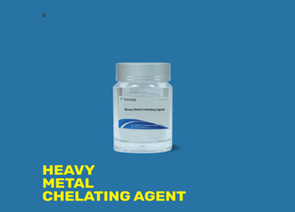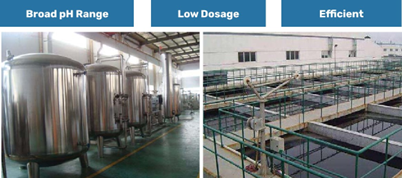The electroplating industry is an indispensable link in the economy. The wastewater produced by electroplating is highly toxic and harmful to the soil and the growth of animals and plants. Therefore, wastewater must be treated and discharged in strict accordance with national standards.
Electroplating wastewater treatment in China is mainly divided into three categories:
Chromium-containing wastewater: mainly uses reduction to treat hexavalent chromium
Cyanide-containing wastewater: mainly treated by breaking cyanide
Other wastewater: including copper, nickel, zinc, etc.
The wastewater and waste liquid discharged from electroplating factories contain a large amount of metal ions such as chromium, copper, nickel, cyanide, acid, alkali, and generally contain organic additives. Some metal ions exist in the form of simple cations, some exist in the form of acid anions, and some exist in the form of complex complex ions. Chemical methods such as neutralization precipitation method, neutralization coagulation precipitation method, oxidation method, reduction method, barium salt method, and ferrite method are commonly used for electroplating wastewater treatment.
Treatment method
Commonly used methods for treating electroplating wastewater in my country include chemical methods, biological methods, physical and chemical methods, and electrochemical methods.
Chemical method
Chemical methods rely on redox reactions or neutralization and precipitation reactions to decompose toxic and harmful substances into non-toxic and harmless substances, or directly remove heavy metals from wastewater through precipitation or flotation.
(1) Neutralization and precipitation method.
In the water treatment process, neutralization and precipitation is a commonly used method, especially for treating wastewater with excessive heavy metals. The basic principle of this method is to adjust the pH value of wastewater by adding chemicals (such as lime, sodium carbonate, sodium hydroxide, etc.) so that heavy metal ions form insoluble hydroxides or carbonates, which are then separated through precipitation. The disadvantages are the generation of a large amount of sludge, high requirements for chemical dosing control, and limited removal of low-concentration heavy metals:
(2) Chelation precipitation method.
The polymer heavy metal capture chelating agent (DTC) reacts rapidly with heavy metal ions such as Hg2+, Cd2+, Cu2+, Pb2+, Mn2+, Ni2+, Zn2+ and Cr3+ in wastewater at room temperature to generate water-insoluble chelate salts. The characteristic of DTC agent for treating electroplating wastewater is that it can remove a variety of heavy metal ions at the same time. It can also exert a good removal effect when heavy metal ions exist in the form of complex salts, and has good development prospects.

FEC-HMR heavy metal chelating agent
FEC-HMR Dithiocarbamates (DTC) are a class of chemicals known for their strong chelating ability towards heavy metals. They are widely used as fungicides, but their heavy metal chelating properties make them valuable for various applications, including wastewater treatment and heavy metal remediation.
Synthesis and Structure
FEC-HMR DTCs are synthesized by reacting primary and secondary amines with carbon disulfide under alkaline conditions. They have the general formula R2N−C(=S)−S−R, where R represents an organic group.
Core Advantage of FEC-HMR
1. Fast Reaction Rate: Regardless of the concentration of heavy metal ions, or the coexistence of multiple types of heavy metal ions, the heavy metal chelating agent can quickly bind to them, completing the reaction in 10 to 15 minutes, saving processing time.
2. Broad pH Range: Generally effective within a pH range of 5 to 12. In most cases, achieving the removal of heavy metal ions does not require alkaline pH adjustment, making the treatment process simpler and more cost effective.
3. Simple Treatment Process, Low Equipment Cost: After using the heavy metal chelating
agent for wastewater treatment, a simple pressure filtration operation is sufficient, resulting in low equipment investment.
4. LOW Dosage, Convenient Usage: When using our company's new chelating agent without pH
adjustment, it can be applied at a dosage of 6 to 12 times the total amount of heavy metals in the wastewater, meeting the standards for all heavy metal indicators.
5. Strong Treatment Capacity: Enhanced capturing ability through molecular structure level modification.
6. Stability of Chelates, Safety, and Environmental Protection: The chelating agent itself is non-toxic, and the formed chelated metal precipitates are stable.
FEC-HMR Application
Sampling of a certain metallurgical wastewater reveals the major heavy metal components of the wastewater as shown in the following table.
Composition | ph | As | Cd | co | cu | Ni | Pb | Zn | |
Before Treatment | 6.05 | 6.623 | 1.126 | 0.808 | 37.865 | 11.895 | 0.778 | 4.156 | |
Standard Value | 6-9 | 0.1 | 0.02 | 1 | 1 | 0.5 | 0.2 | 4 | |
Other Products I | After | 8.8 | 0.086 | ND | 0.181 | 0.104 | ND | ND | 0.764 |
Removal rate | 98.71% | 100.0% | 77.62% | 99.73% | 100.0% | 100.0% | 81.61% | ||
Other Products 2 | After | 6.12 | 4.592 | 0.127 | 0.214 | 0.146 | 0.033 | 0.0237 | 0.763 |
Removal rate | 25.33% | 88.70% | 73.47% | 99.16% | 99.73% | 96.95% | 81.65% | ||
FEC Heavy Metal Chelating Agent | After | 6.15 | 0.075 | ND | 0.078 | 0.110 | ND | ND | ND |
Removal rate | 98.87% | 100.0% | 90.38% | 99.71% | 100.0% | 100.0% | 100.0% | ||
Three sets of comparative experiments are conducted as follows:
Experiment I: Adjust the pH by adding NaOH to around 10.5, then add conventional heavy metal chelating agent at a dosage of six times the total amount of heavy metals in the wastewater.
Experiment 2: Add the chelating agent without adjusting the pH. The conventional heavy metal chelating agent is used at a dosage of six times the total amount of heavy metals in the wastewater.
Experiment 3: No pH adjustment is needed. Directly add our company's new type of chelating agent at a dosage of six times the total amount of heavy metals in the wastewater.
Advantages reflected in the case summary:

Figure 1: reaction vessel Figure 2: Photo of Integrated Effluent Wastewater
Application of FEC-HMR heavy metal chelating agent
Industrial wastewater treatment in electroplating industry, mining and smelting industry, chemical industry, printing and dyeing industry, pharmaceutical and food processing industry
For more information for FEC-HMR heavy metal chelating agent
please contact
Shawn Ge
Walsun Tech & Trade Co., Ltd.
Tel/Mobile(WhatsApp): 0086-13974873008
Fax: 0086-731-82233558
Email: shawn.ge@walsun.cn